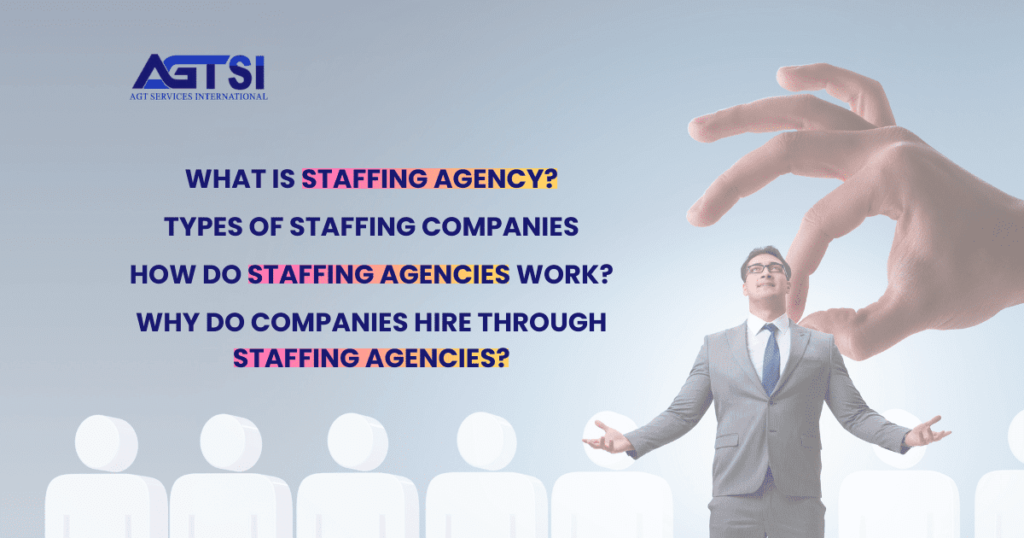Employee Skills Assessment
In the busy landscape of modern workplaces, assessing your team’s employee skills is not just desirable but crucial for sustained success. One key strategy for achieving this is through practical employee skills assessment. In this comprehensive guide, we will study the complexities of assessing employee skills, understand their importance, explore various assessment methods, and outline best practices for optimal results.
What is Employee Skills Assessment?
Employee skills assessment guides the recurring process of assessing an Employee’s Skills, capabilities, knowledge, and abilities in various areas relevant to their job roles and responsibilities within an organization. Talent Capability Assessment aims to measure and gauge the skills possessed by employees, including technical skills, soft skills, behavioral attributes, leadership abilities, and mental capabilities.
The primary purpose of conducting employee skills assessments is to gain insight into employees’ strengths and weaknesses, identify areas for improvement, and make informed decisions regarding talent management, training, career development, and organizational growth. Workforce Talent assessments help organizations match employee skills with job requirements, improve workforce productivity, boost employee engagement, reduce turnover rates, and facilitate strategic decision-making.
What are the Types of Employee Skill Assessments?
Employee skills assessment contains different types customized to evaluate different aspects of an individual’s abilities and competencies. Here are the common types of employee skills assessment:
1. Technical Skills Assessments
Employee Technical Skills assessments focus on estimating job-specific technical skills required to perform tasks related to a particular role or industry. For example, in IT roles, technical skills assessments may include coding tests, software proficiency evaluations, or system troubleshooting exercises.
Purpose
This evaluation evaluates an employee’s proficiency in job-specific technical skills such as coding, software usage, machinery operation, or technical procedures.
Process
Typically involves practical tests, coding challenges, simulations, or hands-on tasks related to the specific technical skill.
2. Soft Skills Assessments
Soft skills assessments are designed to measure non-technical skills that are crucial for effective communication, collaboration, problem-solving, and Social relations in the workplace. Examples of soft skills include communication skills, teamwork, time management, adaptability, and emotional intelligence.
Purpose
Assess people’s skills such as communication, teamwork, leadership, time management, problem-solving, and adaptability.
Process
Often uses self-assessment questionnaires, behavioral interviews, role-playing scenarios, or feedback from peers and supervisors.
3. Behavioral Assessments
Employees Behavioral assessments aim to assess an individual’s work behaviors, personality characteristics, work style preferences, and attitudes toward work-related situations. Behavioral Testing provides insights into how employees approach tasks, handle challenges, engage with colleagues, and contribute to team dynamics.
Purpose:
Focuses on assessing behaviors, attitudes, and emotional intelligence aspects like empathy, resilience, conflict resolution, and decision-making.
Process:
Includes situational judgment tests, behavioral assessments, psychometric evaluations, or structured interviews.
4. Leadership Skills Assessments
Employees’ Leadership Skills assessments are specifically designed to evaluate leadership qualities, managerial skills, decision-making abilities, strategic thinking, conflict resolution capabilities, and the potential for leadership roles within an organization.
Purpose:
Measures leadership qualities such as strategic thinking, decision-making, board, mentoring, and team management.
Process:
Utilizes 360-degree feedback, leadership simulations, case studies, or leadership assessments designed for specific roles.
5. Cognitive Skills Assessments
Cognitive skills assessments focus on assessing an employee’s cognitive abilities, such as critical thinking, problem-solving, logical sense, analytical skills, memory recall, and decision-making processes. These assessments are valuable for roles that require complex cognitive functions and quick decision-making under pressure.
Purpose:
The purpose is to Assess employees’ cognitive abilities, such as critical thinking, problem-solving, logical reasoning, analytical skills, and decision-making.
Process:
Includes aptitude tests, cognitive ability assessments, logic puzzles, numerical reasoning tests, or abstract reasoning exercises.
6. Role-Specific Skills Assessments
Role-specific skills assessments of employees are customized to assess the skills and abilities required for specific job roles within an organization. For example, a sales role assessment may include evaluations of negotiation skills, customer relationship management abilities, and sales techniques, while a project management role assessment may focus on organizational skills, multitasking abilities, and risk management capabilities.
Purpose:
Assesses skills directly related to a particular job role or industry, such as sales skills, customer service skills, marketing skills, or technical support skills.
Process:
Involves job simulations, role-play exercises, case studies, or scenario-based assessments tailored to the specific role requirements.
7. Culture Add Assessment
This type of assessment of employees considers how well an individual matches the organization’s values, culture, and work environment. Workplace Harmony Assessment assesses factors such as ethical behavior, teamwork, adaptability, and contributions to a positive workplace culture.|
8. 360-Degree Feedback: Definition
360-degree Feedback, also known as multi-rater Feedback, is a complete assessment process that gathers Feedback from various sources, including peers, supervisors, subordinates, and sometimes even external stakeholders like clients or customers. 360-degree Feedback aims to provide a well-rounded assessment of an individual’s skills, capabilities, behaviors, and overall performance from multiple viewpoints.
Purpose:
The primary purpose of 360-degree Feedback is to offer a more holistic and complete assessment of an employee’s skills, strengths, weaknesses, and areas for improvement. 360-degree Feedback provides insights into how an individual is perceived by different stakeholders in the workplace, offering a more balanced and objective view compared to assessments conducted only by supervisors or managers.
Process:
In a typical 360-degree feedback process, an employee’s performance is assessed based on required abilities, behaviors, or skills appropriate to their job role. Feedback is collected confidentially from various sources through surveys, questionnaires, or interviews. The Feedback may cover areas such as communication skills, leadership abilities, teamwork, problem-solving, adaptability, and other job-specific competencies.
9. Language Skills Assessment
A Language Skills Assessment is a method used to assess a team member’s ability and competence in a particular language. Employee communication Proficiency Assessment is required for roles that require effective communication, relations with clients or customers, or collaboration in skilled-in-several-language environments. The purpose of a Language Skills Assessment is to determine the individual’s ability to understand, speak, read, and write in the language relevant to their job responsibilities.
Process
The process of conducting a Language Skills Assessment involves several key steps:
Language Proficiency Tests evaluate an individual’s overall language skills, covering grammar, vocabulary, comprehension, and fluency through various exercises like multiple-choice questions, writing tasks, listening exercises, and speaking assessments. Oral Interviews gauge speaking and listening abilities through conversations, role-plays, and presentations. Written Assessments focus on writing skills, including spelling, grammar, punctuation, and structure. Translation Tasks test accurate translation between languages, evaluating comprehension and vocabulary. Language Proficiency Scales like CEFR or ILR categorize skills into levels. Cultural Awareness components assess cross-cultural communication, sensitivity, and awareness in addition to linguistic abilities in Language Skills Assessments.
10. Problem-Solving Skills Assessment
Purpose:
The purpose of an employee’s problem-solving skills assessment is to assess an individual’s ability to identify, analyze, and solve complex problems efficiently and effectively. Problem-Solving Skills Assessment aims to determine the individual’s critical thinking, analytical reasoning, decision-making, and creativity in addressing challenging situations.
Process:
The process of conducting a problem-solving skills assessment involves several steps:
To define problem-solving criteria, start by clearly outlining the essential aspects like logical reasoning, creativity, data analysis, decision-making, and implementing solutions relevant to the job role or industry. Create diverse problem scenarios or case studies mimicking real-world workplace challenges to assess various problem-solving skills. Administer these scenarios through written assessments, virtual simulations, role-plays, or group discussions. Observe how individuals approach and handle these problems, assessing their thought process, analytical abilities, creativity in generating solutions, risk assessment skills, and decision-making strategies.
Evaluate the effectiveness of proposed solutions considering feasibility, practicality, innovation, stakeholder impact, and alignment with organizational goals. Provide constructive feedback highlighting strengths and areas for improvement, with specific guidance on enhancing problem-solving skills. Develop personalized improvement plans including training, mentoring, diverse problem exposure, or workshops. Continuously monitor progress, offering ongoing support, practice opportunities, and feedback for continual growth in this critical competency.
11. Creativity and Innovation Skills Assessment
Assesses an employee’s creativity, innovative thinking, idea generation, and ability to contribute to new solutions or product development.
Purpose:
The Creativity and Innovation Skills Assessment is designed to evaluate an employee’s ability to think creatively, generate innovative ideas, and contribute to new solutions or product development within an organization. A novelty and creative thinking skills assessment is essential for identifying employees who can bring fresh perspectives, problem-solving approaches, and creativity to the table.
Process:
Creativity tests are designed to assess an employee’s creative thinking skills through various tasks such as brainstorming sessions, divergent thinking exercises, or creative problem-solving challenges. For instance, employees may receive a prompt or problem and be tasked with generating as many unique solutions as possible within a specified time frame. Innovation workshops offer an interactive platform to evaluate employees’ innovation skills, involving group activities, ideation sessions, design thinking exercises, or collaborative projects aimed at developing innovative solutions to real-world problems.
Additionally, employees may participate in idea generation sessions, where they are encouraged to propose new ideas, concepts, or strategies related to their work or industry, facilitated by innovation experts, managers, or dedicated creativity teams. Creative problem-solving tasks are also employed, presenting employees with challenging problems or systems that demand innovative thinking for resolution. Individuals are then assessed based on their capacity to approach problems creatively, think outside the box, and propose solutions that showcase originality and practicality.
12. Adaptability and Resilience Skills Assessment
Adaptability and resilience skills are crucial in today’s busy work environments, where change is constant, and challenges are inevitable. Assessing employees’ adaptability and resilience helps organizations understand how well individuals cope with change, handle stress, bounce back from setbacks, and maintain productivity in demanding situations. Here’s a closer look at the purpose, process, and benefits of adaptability and strength skills assessment:
Purpose:
The purpose of assessing adaptability and resilience skills in employees is to evaluate their capacity across multiple dimensions. This includes their openness to change, encompassing new ideas, processes, technologies, and organizational shifts. It involves assessing their willingness to adapt to evolving circumstances and embrace innovative work methods.
Additionally, the assessment delves into their ability to manage stress effectively, handle pressure, and uncertainty, and maintain composure during challenging situations while managing emotions and staying focused. It also evaluates their problem-solving abilities, persistence, and determination in overcoming obstacles, setbacks, failures, or unexpected challenges encountered at work. Furthermore, the assessment measures their agility in adjusting priorities, strategies, and actions swiftly to respond to changing demands, market trends, customer needs, or project requirements.
Process:
The process of assessing adaptability and resilience skills encompasses several key steps. It begins with self-assessment, encouraging employees to evaluate their comfort levels with change, stress management techniques, problem-solving skills, and ability to recover from setbacks. Behavioral interviews follow, delving into specific scenarios where employees demonstrated adaptability and resilience, showcasing their ability to handle challenges, adapt to change, manage stress, and persevere.
Simulation exercises come next, offering real-life workplace challenges to observe employees’ decision-making under pressure, collaboration skills, and ability to navigate uncertainties. Feedback from peers and supervisors adds valuable insights, providing a comprehensive view of how employees handle challenges from different perspectives.
Finally, psychometric assessments such as psychological tests or resilience scales are employed to measure specific traits like adaptability, stress tolerance, flexibility, persistence, optimism, problem-solving, and emotional intelligence, offering a holistic view of employees’ adaptability and resilience capabilities.
Methods of Employee Skill Assessment?
Skill assessment methods vary widely, each offering a unique understanding of an employee’s abilities, knowledge, and skills. Here’s a detailed explanation of the different techniques used for skill assessment:
1. Performance Appraisals
Performance appraisals involve assessing an employee’s job performance over a specific period. The performance Examination method assesses various skills, including technical proficiency, communication, problem-solving, teamwork, and goal achievement. Supervisors or managers conduct performance reviews based on predefined performance metrics, feedback, and observations. Performance appraisals help identify strengths, areas for improvement, and training needs.
2. Self-Assessment
Self-assessment allows employees to assess their own skills, abilities, strengths, weaknesses, and areas for improvement. Employees complete Feedback forms, surveys, or self-reflection exercises to evaluate their performance, knowledge, and skills. While self-assessment can provide valuable insights, it may be subjective and affected by biases. It’s essential to combine self-assessment with other assessment methods for a complete evaluation.
3. Peer Assessment
Peer assessment concerns colleagues or team members considering each other’s skills, contributions, and performance. Peers provide feedback, observations, and ratings based on their interactions, collaborations, and observations. Peer assessment promotes teamwork, collaboration, and mutual learning. However, without proper guidelines and training, it may be prone to biases, conflicts of interest, or lack of objectivity.
4. Skills Tests or Exams
Skills tests or exams assess specific technical, cognitive, or behavioral skills required for a job or role. These tests may include written assessments, practical demonstrations, simulations, case studies, or problem-solving exercises. Skills tests evaluate proficiency in areas such as technical skills, language proficiency, software proficiency, critical thinking, problem-solving, and decision-making. They provide objective data on an individual’s capabilities and readiness for specific tasks or responsibilities.
5. Work Samples or Projects
Work samples or projects require employees to complete actual or simulated tasks, assignments, or projects relevant to their job roles. Employers consider the quality, creativity, accuracy, and timeliness of work samples or projects to assess skills, knowledge, and competencies. This method provides hands-on assessment, showcases practical abilities, and measures job-related skills such as writing, coding, designing, or analytical skills.
6. Behavioral Interviews
Behavioral interviews focus on past behaviors, experiences, and actions to assess competencies, skills, and suitability for a job or role. Interviewers ask candidates to provide specific examples of how they handled challenges, solved problems, communicated effectively, showed leadership, or collaborated with others. Behavioral interviews assess skills such as communication, problem-solving, adaptability, teamwork, and decision-making based on real-life scenarios.
7. Psychometric Assessments
Psychometric assessments use standardized tests, questionnaires, or tools to measure psychological traits, aptitudes, personality traits, cognitive abilities, and emotional intelligence. These assessments include tests for skills such as critical thinking, emotional resilience, leadership potential, creativity, attention to detail, and interpersonal skills. Psychometric assessments provide objective data, predict job performance, and identify strengths and areas for development.
8. Observation and Job Shadowing
Observation and job shadowing involve observing employees’ actual job performance, behaviors, relations, and skills in natural work settings. Managers, supervisors, or mentors observe employees’ work habits, communication styles, problem-solving approaches, and task execution. Job shadowing allows new employees to learn from experienced colleagues and provides valuable insights into job-specific skills, customer relations, and workflow processes.
9. Training and Development Programs
Training and development programs assess employees’ learning progress, skill acquisition, and performance improvements after training interventions. Pre-training assessments evaluate employees’ existing knowledge, skills gaps, and training needs. Post-training assessments measure the effectiveness of training programs, knowledge retention, skill enhancement, and application of learning in job tasks. Training assessments help tailor learning interventions, address skill gaps, and track employee development over time.
How do you Develop an Effective Assessment Plan?
Developing an effective assessment plan is crucial for obtaining meaningful and actionable insights into employees’ skills and competencies. Here’s a detailed guide on how to create such a plan:
1. Define Assessment Objectives
Clearly define the objectives, goals, and desired outcomes of the assessment process. Determine the skills to be assessed, assessment criteria, and performance benchmarks. Consider whether the assessment is for hiring, promotions, training needs, or performance evaluations.
2. Select Appropriate Assessment Methods
Choose the most suitable assessment methods based on the nature of skills, organizational culture, resources, and participant preferences. Consider a combination of techniques for a holistic assessment approach. Methods may include written exams, practical tasks, simulations, interviews, or peer evaluations.
3. Design Assessment Tools
Develop assessment tools, instruments, forms, titles, or scoring matrices that are consistent with the assessment objectives. Ensure the clarity, relevance, and reliability of the tools. The tools should effectively measure the identified skills and competencies.
4. Train Assessors
Provide training and guidelines to assessors, examiners, or reviewers involved in the assessment process. Ensure assessors understand assessment criteria, performance standards, and moral considerations. Training should cover assessment methods, fairness, confidentiality, and result interpretation.
5. Communicate and Prepare Participants
Communicate the assessment process, objectives, expectations, and timelines to participants. Provide guidance, resources, and support to help participants prepare effectively for assessments. Clarify what skills will be assessed, how assessments will be conducted, and the expected outcomes.
6. Conduct Assessments
Administer assessments following established protocols, guidelines, and moral standards. Ensure fairness, confidentiality, and transparency throughout the assessment process. Monitor the assessment process to address any issues or concerns that may arise.
7. Collect and Analyze Data
Collect assessment data, scores, feedback, and observations systematically. Use data analytics tools or software to analyze results and identify trends, patterns, and areas for improvement. Compare results against established benchmarks or standards to assess performance.
8. Provide Feedback and Action Plans
Based on assessment results, provide constructive feedback, performance reports, and action plans. Collaborate with participants to set development goals, training interventions, and skill enhancement strategies. Use assessment data to inform decision-making, talent development initiatives, and organizational planning.
9. Importance of Employee Skills Assessment
The significance of conducting regular employee skills assessments must be considered. It serves as a strategic tool for talent management, workforce planning, career development, and organizational growth. By gaining insights into employees’ skills, organizations can make informed decisions regarding training, recruitment, promotions, and succession planning.
Benefits of Effective Skills Assessment
Identifying Skills Gaps: One of the primary benefits is the ability to identify skills gaps within the workforce. This enables targeted training and development initiatives to bridge these gaps and enhance overall performance.
1. Enhanced Workforce Productivity
A well-assessed workforce is a more productive workforce. By matching skills with job requirements, employees can perform their roles more efficiently, leading to increased productivity and output.
2. Customized Training Programs
Assessments provide data-driven insights into employees’ training needs. This facilitates the design and implementation of tailored training programs that address specific skill deficiencies and promote continuous learning.
3. Strategic Decision-Making
Organizations can make strategic HR decisions based on assessment results. This includes decisions related to promotions, role reassignments, talent acquisition, and resource allocation.
4. Employee Engagement and Retention
Investing in employee development through skills assessments fosters a culture of engagement and continuous improvement. Active employees are more likely to stay with the organization, reducing turnover rates and retaining valuable talent.
Best Practices for Effective Skills Assessments
Sticking to best practices improves the effectiveness and reliability of employee skills assessments. Here are some best practices to consider:
1. Objective and Transparent
Ensure assessments are objective, fair, and transparent. Use standardized criteria, avoid biases, and maintain confidentiality.
2. Feedback and Coaching
Provide timely, constructive feedback, coaching, and support to participants. Encourage continuous learning, skill development, and performance improvement.
3. Regular Assessments
Conduct regular assessments to track progress, measure growth, and adapt to changing skill requirements. Keep assessments updated, relevant, and aligned with organizational goals.
4. Technology Integration
Using technology tools, platforms, and software for efficient assessment administration, data analysis, and reporting. Adopt digital solutions for remote assessments and online learning initiatives.
5. Continuous Improvement
Continuously evaluate and refine the assessment process based on feedback, outcomes, and industry best practices. Highlight a culture of constant improvement and learning skills.
Final Thoughts
In conclusion, practical employee skills assessment is a basis for organizational success, talent development, and performance management. By executing structured assessment plans, utilizing diverse assessment methods, and fostering a culture of learning and development, organizations can unlock the full potential of their workforce, drive innovation, and achieve sustainable growth in today’s competitive business landscape.




















